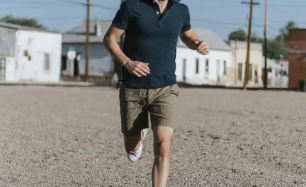Caring for Your Casual Clothes: Maintenance Tips for Longevity
Casual clothes—your favorite jeans, go-to t-shirts, cozy sweaters, and easy everyday pieces—are the backbone of your wardrobe. We reach for them the most, wear them on repeat, and rely on them for comfort and confidence. But frequent wear means frequent washing, and without proper care, even your best-loved staples can fade, stretch, shrink, or lose their shape far too soon.
The good news? A little extra attention goes a long way. With the right maintenance habits, your casual wardrobe can look great and last longer—saving you money and keeping your style consistent.
Here’s how to care for your casual clothes and extend their life, one smart habit at a time.

1. Read the Care Label (Always)
It sounds simple, but it’s one of the most ignored tips. Those little tags inside your clothes contain valuable information about how to wash, dry, and iron each piece properly.
- If it says “cold wash only,” avoid warm or hot water to prevent shrinking or fading.
- “Lay flat to dry” usually means the fabric is delicate and prone to stretching.
- “Dry clean only” shouldn’t be ignored—attempting to wash these items at home can distort their shape or ruin the fabric entirely.
Tip: Cut off bulky labels only after you’re familiar with the care instructions.

2. Wash Less Often (Yes, Really)
Not every casual piece needs to be washed after one wear. Over-washing can cause color fading, fiber breakdown, and shrinkage.
- T-shirts: Every 1–2 wears (or after sweating)
- Jeans: Every 4–6 wears
- Sweatshirts and hoodies: Every 3–5 wears
- Casual dresses and skirts: Every 1–3 wears depending on activity
Tip: Spot clean small stains instead of washing the entire garment, and air out clothes after wearing to keep them fresh.
3. Wash in Cold Water
Hot water may seem like it cleans better, but it can actually break down fabric fibers, fade colors, and shrink clothes over time. Cold water is gentler and just as effective for everyday laundry, especially with modern detergents designed for low temperatures.
Bonus: Cold washes use less energy—good for your clothes and the planet.
4. Turn Clothes Inside Out Before Washing
Turning your casual clothes inside out before tossing them in the wash helps protect the fabric surface, preserve prints or graphics, and minimize friction from the machine drum. This simple step helps keep your clothes looking newer, longer.
5. Use a Gentle Detergent
Harsh detergents can strip color and weaken fibers. Choose a mild, fragrance-free detergent for everyday casual wear, especially for cottons, knits, and blended fabrics. If you’re washing activewear or delicates, opt for a formula specifically designed for them.
Tip: Avoid fabric softeners on activewear and stretchy materials—they can coat fibers and reduce breathability and elasticity.

6. Skip the Dryer When You Can
Dryers are convenient—but they’re also one of the biggest culprits behind shrinking, fading, and fabric wear. Heat breaks down elastic fibers and shortens the lifespan of your clothes.
- Hang or lay flat to dry whenever possible.
- Use a drying rack for airflow and shape maintenance.
- If you must use the dryer, use the lowest heat setting and remove clothes while they’re still slightly damp.
7. Store Casual Clothes Properly
Don’t just toss your clothes in drawers or over chairs. How you store your casualwear matters:
- Fold stretchy items like t-shirts and knits to prevent them from stretching on hangers.
- Hang wrinkle-prone items like casual dresses or collared shirts.
- Keep clothes in a cool, dry place to avoid mustiness or mold.
Tip: Don’t overcrowd your wardrobe—give your clothes room to breathe and retain their shape.
8. Treat Stains Quickly and Gently
Don’t let stains set. The sooner you treat them, the better the chance of removal without damaging the fabric.
- Blot, don’t rub.
- Use mild stain removers and test them on hidden areas first.
- Avoid hot water when treating stains—it can set certain types like blood or protein-based marks.
9. Mend Small Damages Early
A loose button, small hole, or fraying seam is easier to fix when caught early. Regularly check your clothes and do quick repairs before damage worsens. Keeping a basic sewing kit at home can help you extend the life of many items.
10. Rotate Your Wardrobe
Wearing the same items repeatedly can cause quicker wear and tear. Rotating your casual pieces ensures more balanced usage—and helps all your clothes last longer.
Final Thoughts
Your casual clothes may be everyday essentials, but that doesn’t mean they should wear out quickly. With a few thoughtful habits and gentle care, your favorite tees, jeans, and cozy knits can stay looking and feeling like new for years to come.
When you care for your clothes, they care for your style—comfortably, consistently, and sustainably.





